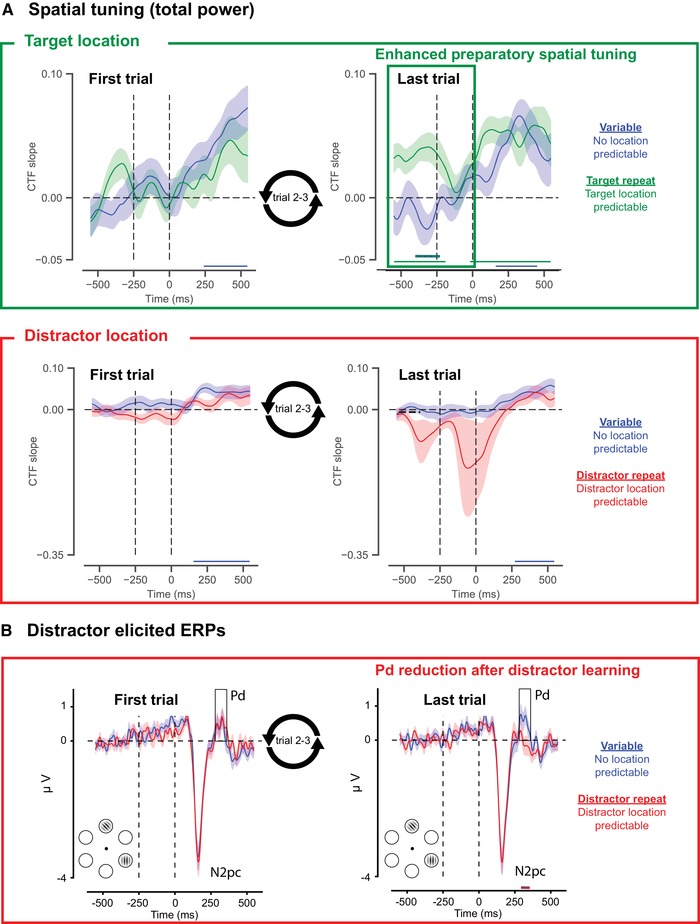Figure 2.

Summary of results of our recent EEG study76 examining how distractor learning influences distractor processing. (A) Slopes of channel tuning functions (CTFs) tuned to the target location (top; green) and the distractor location (bottom; red), estimated based on total alpha power. While target location learning, induced by keeping the target location fixed across a block of trials, resulted in anticipatory tuning toward the expected target location, no such anticipatory tuning was observed after distractor location repetition. That is, no evidence was obtained for a change in anticipatory tuning to the distractor location in the last versus the first trials of the block. (B) Difference waveforms (contralateral–ipsilateral) revealing the N2pc and Pd elicited by distractors in the first trial and in the last trial of a block in which either the location of the distractor was repeated or varied across trials. As the figure shows, the Pd elicited by expected distractors (last trial distractor‐repeat condition) was greatly reduced in amplitude compared to distractors that occurred at a nonpredictable location (e.g., last trial variable condition). Double‐colored thick lines in all plots indicate time points with a significant difference between the respective conditions after cluster correction (P < 0.05).
